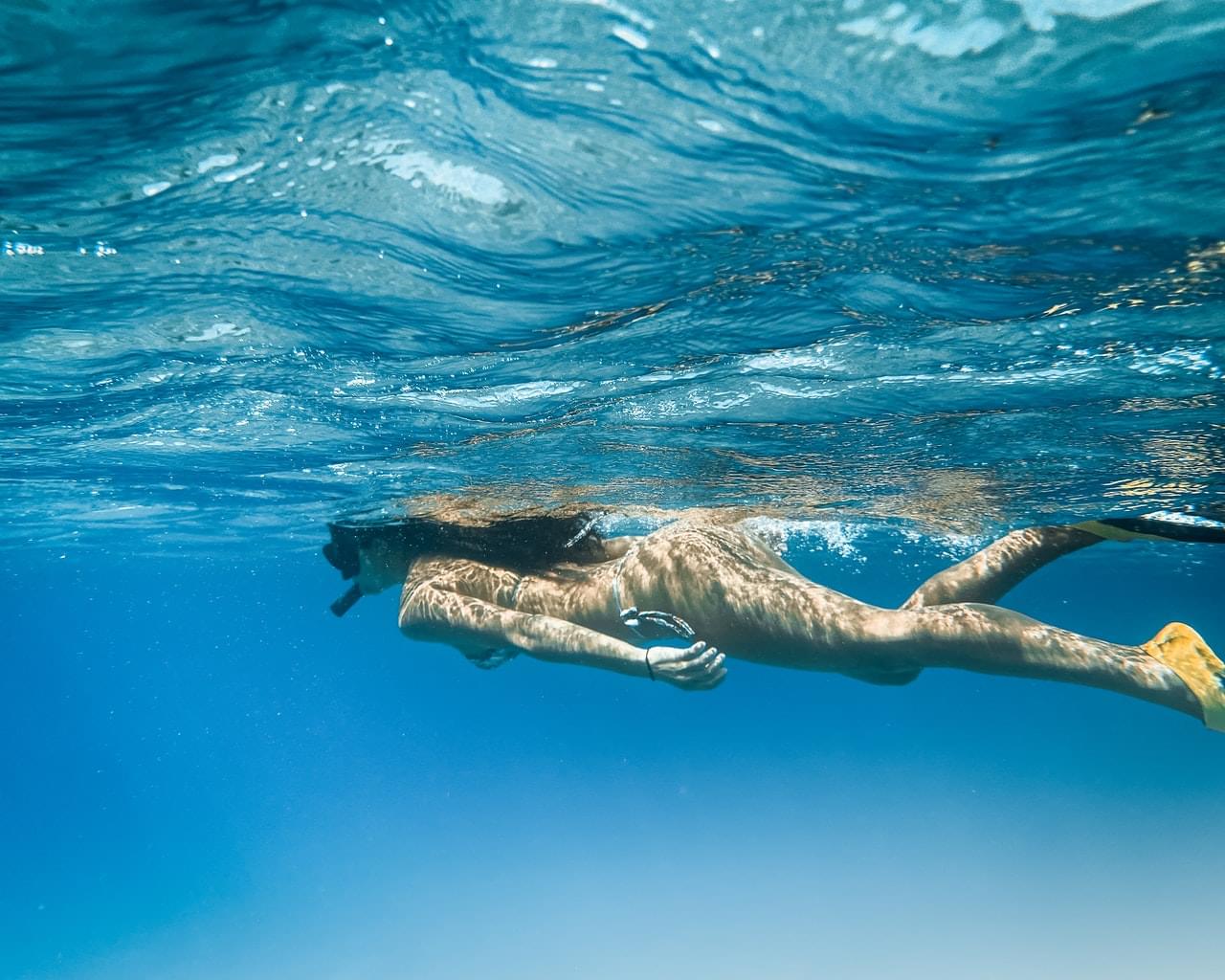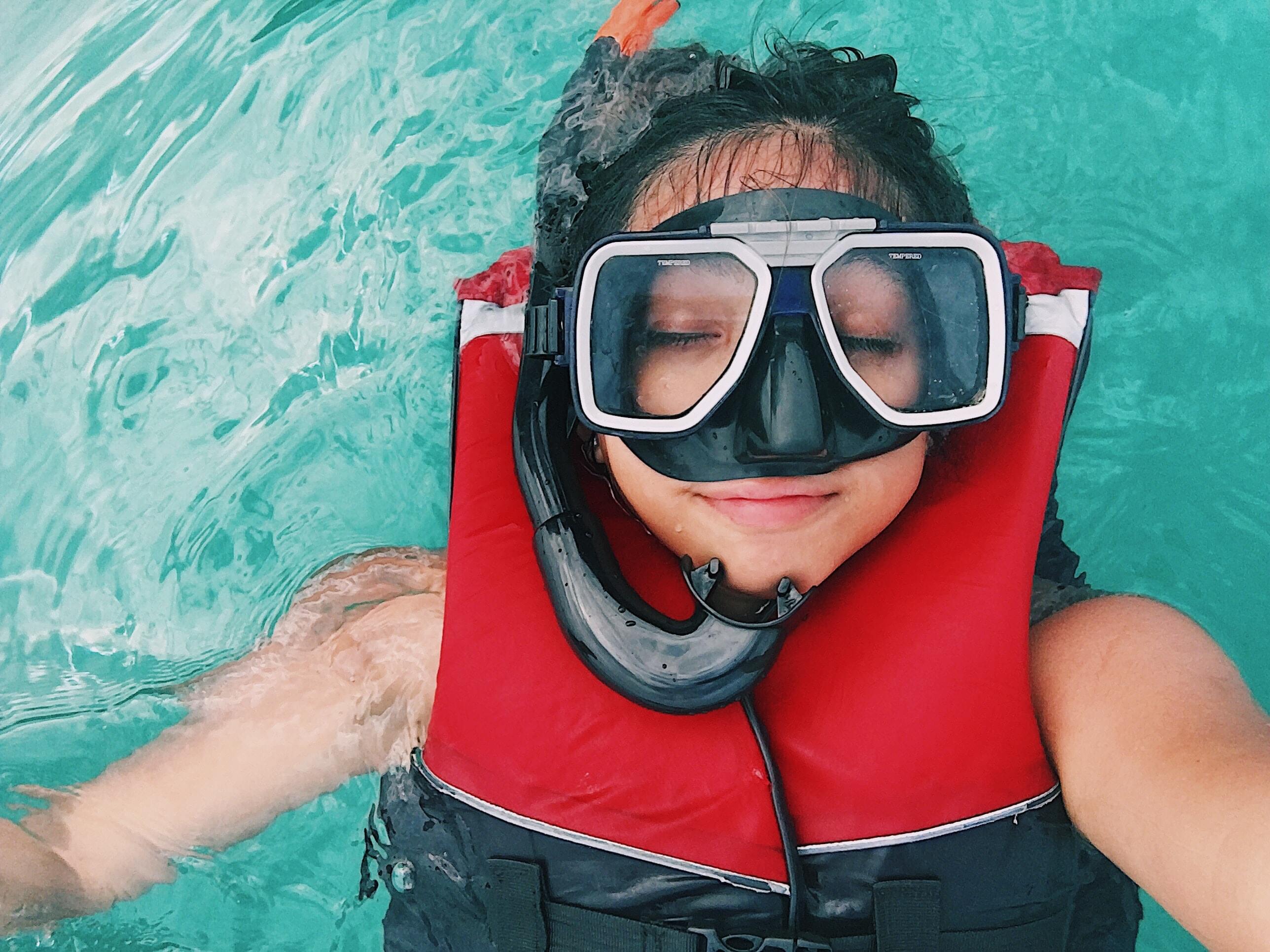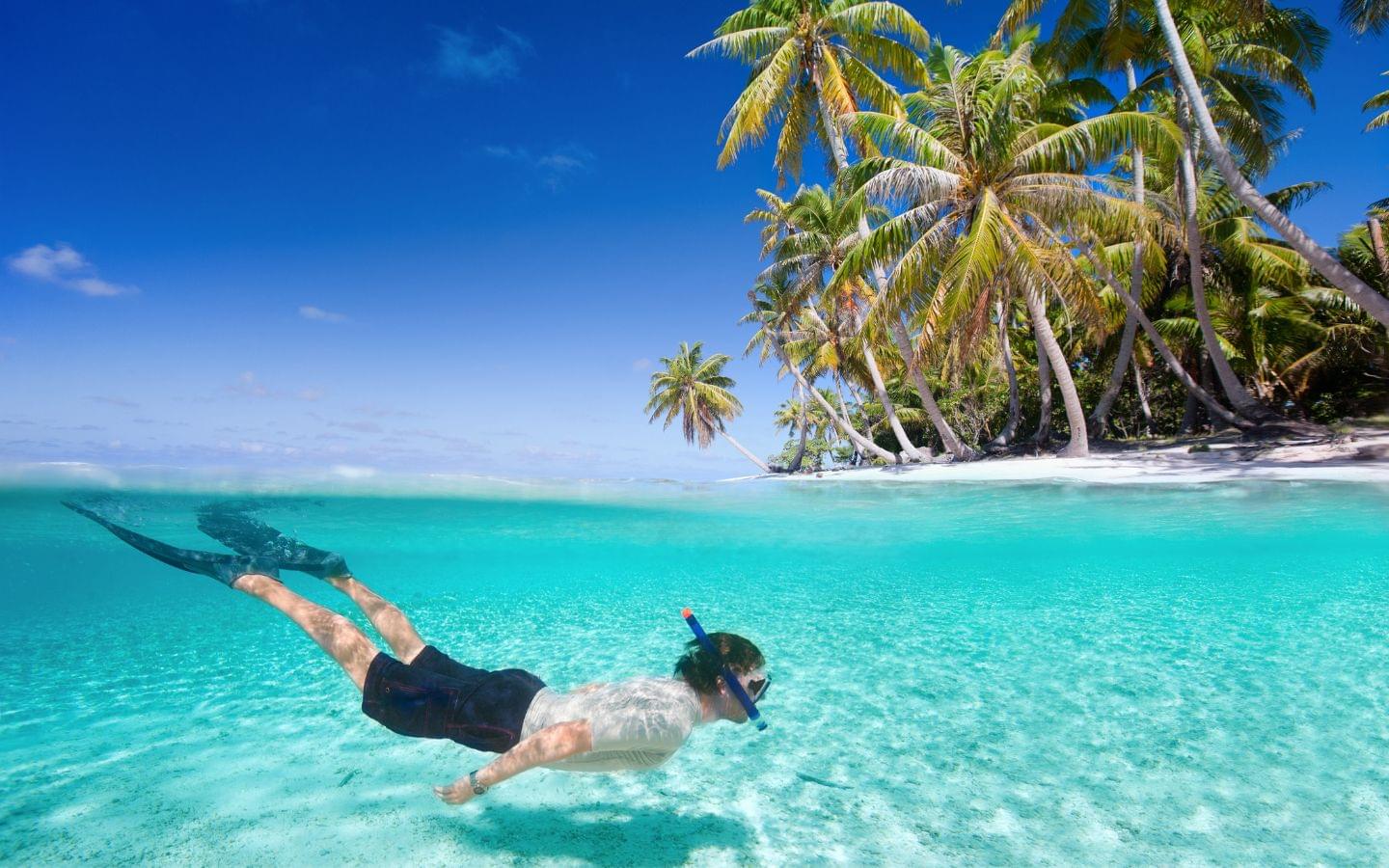How to snorkel without swallowing water
Snorkeling is an incredible way to explore the underwater world and view marine life, but beginners often wonder how to snorkel without swallowing water. Ifyou’ve been snorkeling before, you may have already experienced this unpleasant sensation. Fortunately, by following the tips in this article, you’ll soon be on your way to snorkeling like a pro.
To avoid swallowing water when snorkeling, make sure your equipment fits you correctly. Control your breathing, use your tongue as a splash guard when you inhale, and exhale sharply when needed to blow any water out of the tube. Be sure to relax and practice in calm, shallow water before heading out into deeper areas.
Make sure your equipment fits properly
The fit, quality, and comfort of your snorkeling gear can make or break your experience. If you’re purchasing your own snorkeling equipment, get advice from experts when possible to reduce your chances of a poor fit.
You should also seek out high-quality equipment from trusted brands, as this gear undergoes rigorous testing to ensure a safe and enjoyable snorkeling experience.
Below are the three key pieces of snorkeling gear and suggestions for fitting them properly.
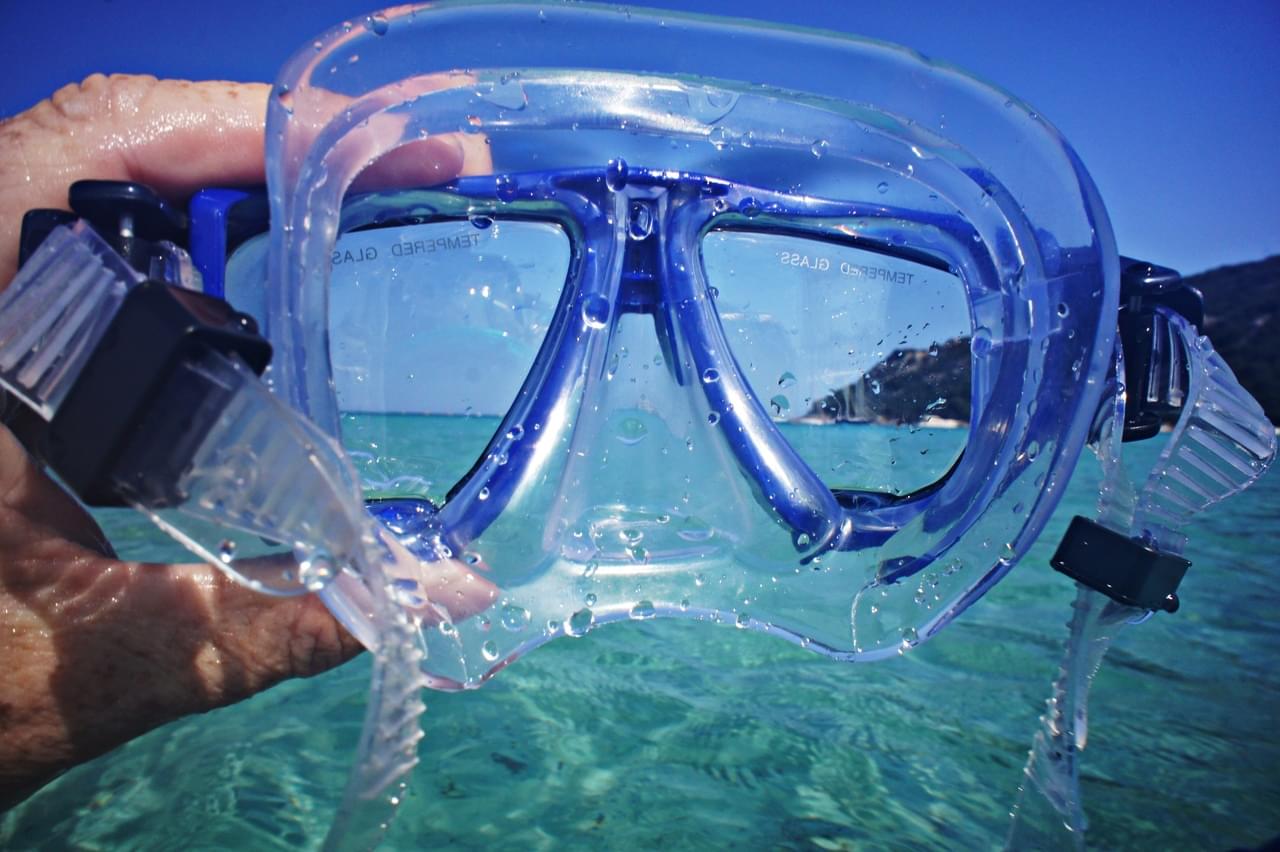
Mask
When selecting a snorkeling or diving mask, confirm the mask is the right size for you before getting in the water. Press it against your face and inhale gently through your nose. If it suctions on without feeling uncomfortably tight, it’s probably a good size.
Place the mask strap around the broadest part of your head and adjust it as needed. It should fit snugly without being overly tight.
If you have long hair, make sure it’s not interfering with the seal on your mask. Not only will this impact your view, but it could also cause the mask to leak.
Snorkel
Attach the snorkel to your mask using the clip or keeper. Adjust the height so that the mouthpiece fits comfortably in your mouth without putting tension on the tube.
Position the tube at about a 45-degree angle between the top and the back of your head. Doing so will ensure it’s well-positioned in the water and sticks out far enough to prevent water from coming in.
Fins
Fins aren’t necessary for snorkeling, but they are especially useful for beginners and can help you glide through the water with less effort. Like the rest of your gear, you want your fins to feel snug but not tight. They shouldn’t feel like they’re pinching you anywhere, but should also not flop around.
Try a dry-top snorkel or semi-dry snorkel
Classic snorkels come in three main types:
- Semi-dry: semi-dry snorkels include a splash guard at the top of the tube to keep water out and a purge valve at the bottom to allow any water that makes its way inside to drain more easily.
- Dry: dry snorkels generally have all the same features as semi-dry, with the addition of a float valve. This mechanism seals the tube when completely submerged and blocks water from getting inside.
- Wet: wet snorkels are the simplest type and do not include any special features to keep water out.
Dry-top snorkels and semi-dry snorkels are more beginner-friendly than wet ones since they have technology that prevents water from entering the snorkel tube.
However, there is a small chance that the float valve on a dry snorkel could accidentally close while you’re inhaling. Stay calm and don’t panic if this occurs. Take the snorkel out of your mouth so you can breathe and open the float valve manually.
Semi-dry snorkels are also well-suited for activities where the user will spend a lot of time underwater, including freediving, spearfishing, and scuba diving.

Control your breathing
When snorkeling, it’s crucial to breathe slowly and deeply and avoid overexerting yourself. Controlled breathing helps you stay calm and ensures proper air exchange through the snorkel tube.
The additional respiratory dead space in snorkels increases the concentration of carbon dioxide in the air users inhale.1. When breathing through a snorkel, some of the air from each exhalation does not completely leave the tube and is inhaled again, which can cause carbon dioxide to build up in the blood. As a result, you may feel like you’re not getting enough air or become dizzy if you’re breathing too shallowly.
Practice deep breathing, also known as diaphragmatic breathing, techniques on land to ensure you’ve mastered them before heading into the water.
Consider using a full-face snorkel mask
Full-face snorkel masks are another option popular among beginners as well as some more seasoned snorkelers. These snorkel masks cover the entire face, which many first time snorkelers find to be a more comfortable and straightforward experience.
Some people in the snorkeling industry have expressed concerns that full-face snorkel masks increase the risk of carbon dioxide buildup.2 If you decide to go with this option, make sure that the mask fits you correctly and purchase it from a reputable company.
Breathe only through your mouth
Avoid inhaling or exhaling through your nose since this can cause your mask to leak. If you’re struggling to remember to breathe through your mouth, you can try using a nose clip over your mask.
While it’s possible to use swimming goggles for snorkeling, goggles make it harder to breathe through your mouth without getting any water up your nose and lack a designated place to attach a snorkel. As a result, most beginners have a better experience if they use a dedicated snorkeling mask rather than swimming goggles.
Practice in good conditions
If it’s your first time snorkeling, you should get used to the feeling in shallow areas before heading into deep or open water. It’s good to practice in a swimming pool, lake, or other body of water without any waves at first since waves are more likely to submerge your snorkel tube unexpectedly. Waves can also push you into rocks, coral reefs, or other underwater obstacles.
When you do head out into deeper water, make sure the conditions are ideal - warm, sunny, and calm. Warm water offers a more comfortable experience, while colder water requires additional gear like wetsuits.
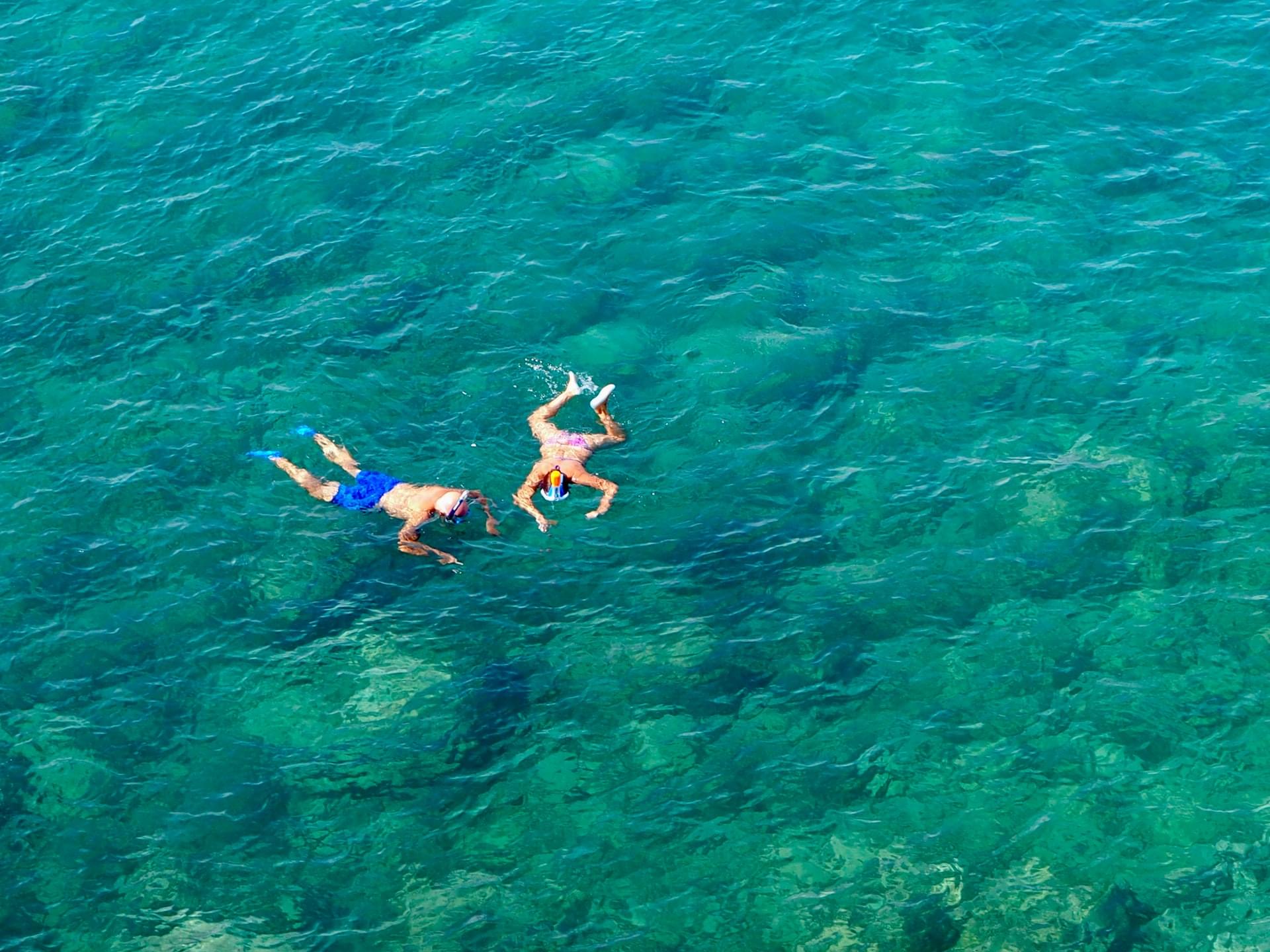
Maintain good body positioning
Keeping your body well-positioned is a crucial part of avoiding swallowing water.
It’s best to float comfortably on the surface and look down and slightly forward. This position will help keep the top of the tube above the surface and keep water out.
To conserve energy, keep your arms relaxed at your sides and focus on propelling yourself forward using only your legs and fins. Even if you’re a good swimmer, you may benefit from using a life jacket or other floatation device, as these can help you maintain proper positioning in the water.
Turn your tongue into a splash guard
No matter how many precautions you take, you will likely end up with saltwater in your tube and your mouth at some point. When it happens, don’t panic. Using your tongue as a splash guard can help you avoid breathing in or swallowing any water that enters your mouth.
Before inhaling, place the tip of your tongue on the roof of your mouth to block any water from getting into your throat. Exhale deeply to blow any remaining water back out the snorkel tube.
Clear excess water from your snorkel
There are two ways to purge water from your snorkel:
- Take the snorkel out of your mouth and dump any excess water. Beginners may find this option simpler.
- Exhale sharply into the mouthpiece. This tactic will force water out the top of the tube and through the purge valve if your snorkel has one. Using a snorkel with a purge valve will ease the process.
Learn to breath-hold dive
Once you feel comfortable snorkeling at the surface, you can try diving underwater to get a better view of marine life.
While scuba divers have equipment allowing them to breathe underwater, snorkelers must learn how to swim under the surface while holding their breath, also known as breath-hold diving. Learning this technique will immerse you deeper in the underwater world and take your snorkeling to the next level.
Follow the steps below to enhance your snorkeling experience without swallowing water:
- Avoid hyperventilating before you dive, as this can be dangerous.3
- When getting ready to dive, take a few deep, slow breaths in and out. Take one last deep breath and hold it as you dive under the water.
- Try to relax your body as much as possible to conserve energy.
- Enjoy your exciting new perspective! When you’re ready to come back up, look towards the surface and gently ascend.
- Once you get back to the surface, exhale deeply to purge any water in the tube. Inhale carefully using your tongue as a splash guard in case any water remains.
Conclusion
From shallow seas along the coast to the open ocean, snorkeling opens up another world to discover and explore.
Snorkeling without swallowing water may seem tricky at first. With the right equipment and a little practice, you’ll be able to experience the excitement of being submerged in the ocean without getting a mouthful of saltwater.
References
-
Toklu, A S et al. “Ventilatory and metabolic response to rebreathing the expired air in the snorkel.” International journal of sports medicine vol. 24,3 (2003): 162-5. doi:10.1055/s-2003-39084. ↩
-
“Increasingly popular full-face snorkel masks raise safety concerns.” _CBS News, _14 Mar. 2018, cbsnews.com. ↩
-
Elliott, David H et al. “Human respiratory system.” Encyclopædia Britannica, Encyclopædia Britannica, inc., 13 Feb. 2020, britannica.com. ↩
Last updated 17 October 2024
Table of contents
- Make sure your equipment fits properly
- Try a dry-top snorkel or semi-dry snorkel
- Control your breathing
- Consider using a full-face snorkel mask
- Breathe only through your mouth
- Practice in good conditions
- Maintain good body positioning
- Turn your tongue into a splash guard
- Clear excess water from your snorkel
- Learn to breath-hold dive
- Conclusion
- References
